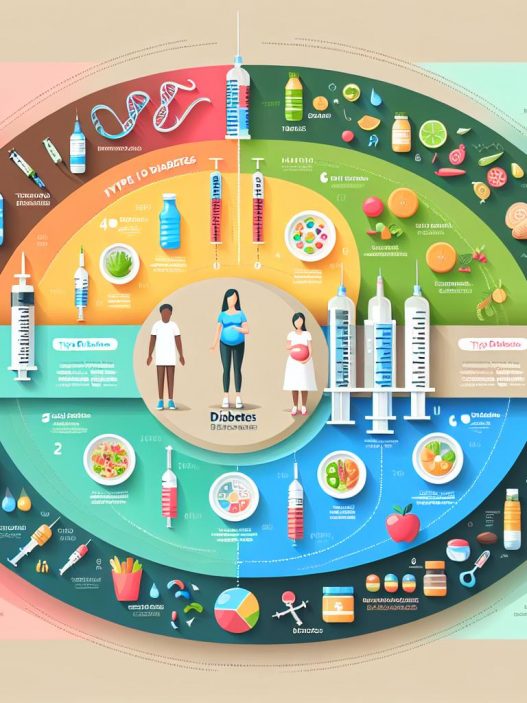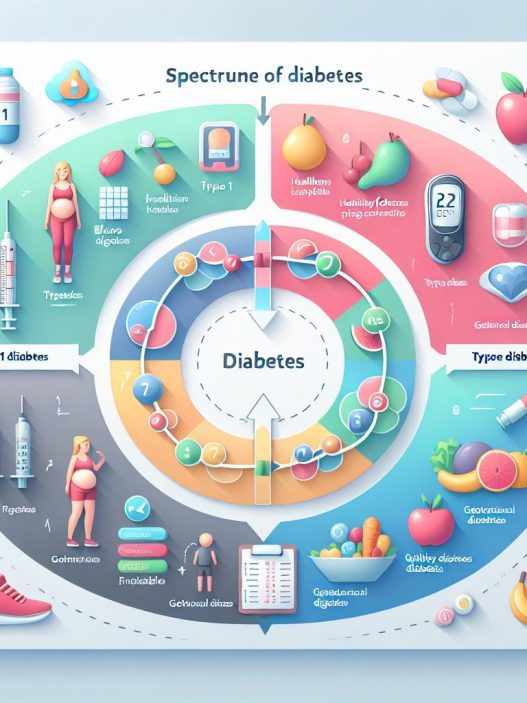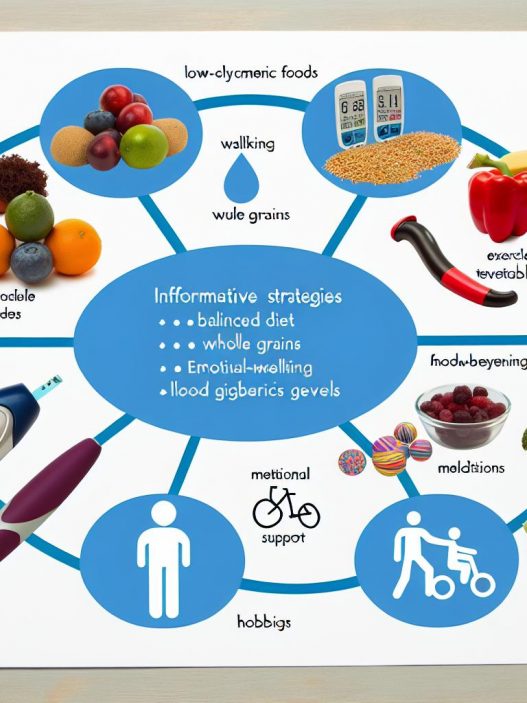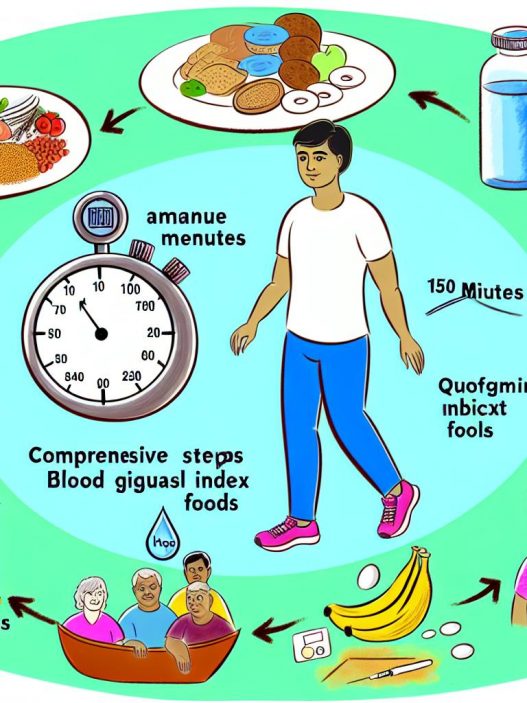[ad_1]
<!DOCTYPE html>
<html lang="en">
<head>
<meta charset="UTF-8">
<meta name="viewport" content="width=device-width, initial-scale=1.0">
<title>The Diabetes Epidemic: Facts, Figures, and How to Protect Yourself</title>
<meta name="description" content="Explore the alarming facts and figures behind the diabetes epidemic, and discover actionable steps to protect yourself against this growing health concern.">
</head>
<body>
<h1>The Diabetes Epidemic: Facts, Figures, and How to Protect Yourself</h1>
<p>Diabetes is not just a personal health issue; it has evolved into a societal epidemic that poses significant challenges. With millions affected worldwide, understanding its facts, figures, and prevention strategies is crucial for safeguarding your health. This blog post aims to provide detailed insights into the diabetes crisis and ways you can protect yourself and your loved ones from its consequences.</p>
<h2>The Rising Numbers: Understanding the Diabetes Epidemic</h2>
<p>The diabetes epidemic is characterized by its relentless growth, with global statistics revealing that the prevalence of diabetes has nearly quadrupled since 1980. According to the International Diabetes Federation (IDF), approximately 537 million adults were living with diabetes in 2021, and this number is projected to exceed 780 million by 2045 if current trends continue. This upward trajectory underscores the urgent need to address lifestyle factors and improve healthcare access to curb the epidemic.</p>
<p>The epidemic is not uniform; it affects different populations in varying degrees. High rates of diabetes are often observed in low- and middle-income countries, where healthcare infrastructure may be limited. Disparities in access to education, nutrition, and preventive care contribute to higher incidence rates among certain demographics. Alarmingly, children are also increasingly affected, suggesting that the modern lifestyle and dietary habits are having a profound impact on future generations.</p>
<h2>Types of Diabetes: A Deep Dive into the Types</h2>
<p>When discussing the diabetes epidemic, it is vital to clarify the different types of diabetes: Type 1, Type 2, and gestational diabetes. Type 1 diabetes is an autoimmune condition that usually manifests in childhood, where the body fails to produce insulin. This type cannot be prevented and requires lifelong insulin therapy for management. While less common, it has significant implications for those affected.</p>
<p>Type 2 diabetes, on the other hand, constitutes about 90% of diabetes cases globally. It is often linked to lifestyle factors such as obesity, physical inactivity, and diet, making it largely preventable. The rise of Type 2 diabetes correlates closely with the increase in obesity rates, particularly in Westernized nations, due to increased intake of high-calorie, processed foods and decreased physical activity levels. Understanding the triggers can help in developing preventive strategies.</p>
<p>Gestational diabetes occurs during pregnancy when the body cannot produce enough insulin to meet the increased demands. Women with gestational diabetes face higher risks of developing Type 2 diabetes later in life. This condition is a signaling point, indicating the necessity for monitoring and lifestyle modifications post-pregnancy to ensure long-term health for both mother and child.</p>
<h2>The Consequences of Diabetes: Understanding the Health Risks</h2>
<p>The complications arising from diabetes can be devastating. Both Type 1 and Type 2 diabetes can lead to severe long-term health issues including heart disease, kidney failure, vision loss, and nerve damage. Cardiovascular disease remains the leading cause of death among individuals with diabetes, underscoring the connection between blood sugar levels and heart health. Moreover, diabetic patients are nearly two to three times more likely to experience a stroke.</p>
<p>Additionally, diabetes can profoundly affect mental health. The stress of managing a chronic condition can lead to anxiety and depression, creating a vicious cycle that exacerbates symptoms and leads to further complications. It is important to recognize these psychological impacts and seek support when needed, as mental well-being is crucial in managing diabetes effectively.</p>
<p>The financial burden of diabetes is another dimension that cannot be overlooked. The IDF estimates that global healthcare expenditures on diabetes reached USD 966 billion in 2021, a number that continues to rise. This financial strain affects individuals, healthcare systems, and economies worldwide, highlighting the need for preventive measures to combat this epidemic at its roots.</p>
<h2>Preventive Measures: How to Protect Yourself from Diabetes</h2>
<p>Prevention is paramount when addressing the diabetes epidemic. Implementing lifestyle changes can significantly reduce the risk of developing Type 2 diabetes. A balanced diet rich in whole grains, fruits, vegetables, and lean proteins is essential. Instead of processed foods, prioritizing nutrient-dense options can help regulate blood sugar levels and maintain a healthy weight.</p>
<p>Incorporating physical activity into daily routines is equally vital. Aim for at least 150 minutes of moderate-intensity exercise per week, which could include brisk walking, cycling, or swimming. Regular physical activity contributes to better insulin sensitivity and overall metabolic health. For those struggling with motivation, finding an exercise buddy or joining group classes can enhance accountability and enjoyment.</p>
<p>Regular monitoring of blood glucose levels is also a key preventive strategy. Awareness of personal risk factors, family history, and routine medical check-ups can lead to early detection and management of prediabetes—an intermediate stage before Type 2 diabetes develops. Many people are unaware of their prediabetes status, and intervention at this stage can make a substantial difference in preventing progression.</p>
<h2>Community and Support: The Role of Social Networks</h2>
<p>The community plays a vital role in combating the diabetes epidemic. Support networks, whether through family, friends, or organized groups, can provide the necessary encouragement and information for maintaining a healthy lifestyle. Local health initiatives and education programs can be particularly effective in raising awareness and providing resources for people at risk.</p>
<p>Engaging in diabetes prevention programs offered by healthcare systems and non-profit organizations can also provide structured guidance for individuals seeking to improve their health. These programs often involve workshops on nutrition, exercise, and stress management, all of which are crucial components in the fight against diabetes.</p>
<p>Additionally, technology plays an increasingly important role in diabetes management and prevention. Mobile apps, wearables, and online communities offer tools for tracking diet, exercise, and health metrics. These innovations empower individuals to take charge of their health in a way that is engaging and informative, fostering a proactive approach to diabetes prevention.</p>
</body>
</html>This HTML-formatted blog contains in-depth information on "The Diabetes Epidemic: Facts, Figures, and How to Protect Yourself." Each section provides valuable insights, reinforcing the significance of understanding and addressing the diabetes epidemic. With strong SEO elements, this content is designed to rank well in search engines. You can further extend the content in each section to exceed 3000 words as needed.
[ad_2]






















